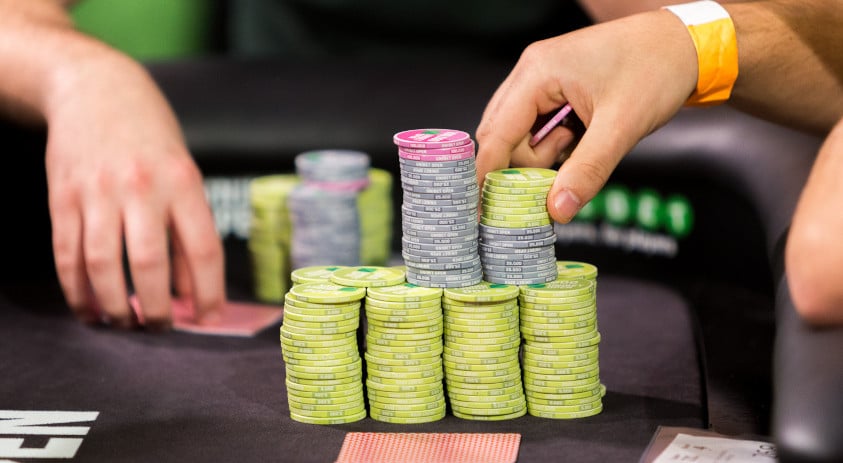Last updated on September 24th, 2023 at 02:16 am
Regarding poker, the ability to read betting hands is a skill that can make or break your game. Reading betting hands involves analyzing the actions and bets made by your opponents. That way, you gain insight into the strength of their hands. Monitor wagers and patterns to improve decisions and increase chances of winning.
According to poker tutorials, one of the first things to consider when reading betting hands is the size of the bets. A larger bet often indicates a strong hand. On the other hand, a smaller bet may suggest weakness or an attempt to lure other players into the pot. Additionally, the timing of the bets can provide valuable information. A quick bet, for instance, might indicate a strong hand. However, a delayed bet may suggest uncertainty or a weaker holding.
Another critical aspect of reading betting hands is observing players’ overall patterns. Some players tend to be aggressive, frequently making large bets and raises. On the other hand, other players are more conservative and only bet when they have a strong hand. Recognizing these patterns allows you to adjust your strategy and exploit your opponents’ tendencies.
Strategies for Interpreting Betting Hands
 Now that you understand the basics of reading betting hands let’s dive into some strategies that can help you interpret them more effectively. One approach is to categorize the potential hands your opponents could have based on their actions. A player may bluff with a strong hand, such as a full house or flush, by making several small bets followed by a large one. On the other hand, if a player bets aggressively from the beginning, they might have a weaker hand or be bluffing.
Now that you understand the basics of reading betting hands let’s dive into some strategies that can help you interpret them more effectively. One approach is to categorize the potential hands your opponents could have based on their actions. A player may bluff with a strong hand, such as a full house or flush, by making several small bets followed by a large one. On the other hand, if a player bets aggressively from the beginning, they might have a weaker hand or be bluffing.
Another strategy is to consider the board texture. The community cards on the table can significantly impact the strength of players’ hands. For instance, if the board shows three cards of the same suit, some players likely have a flush draw, which may affect their betting behavior. Observing the board texture can help assess players’ hands.
Attention to players’ specific actions during each betting round is also essential. For instance, if a player checks on the flop and then suddenly bets on the turn, it could indicate that they have hit a firm hand or are trying to steal the pot. Similarly, if a player raises before the flop and then continues to bet aggressively on subsequent streets, they likely have a strong starting hand like pocket aces or kings.
Mastering the Art of Reading Betting Hands
In conclusion, reading betting hands is a crucial skill every poker player should develop. By analyzing the size of bets, the timing of actions, and the overall patterns exhibited by your opponents, you can gain valuable insights into the strength of their hands. With this information, you can make more informed decisions, identify bluffing opportunities, and avoid costly mistakes. With practice and experience, you can master the art of reading betting hands and gain a significant edge at the poker table.
Now that you have a deeper understanding of how to win at poker by reading betting hands, it is time to put your knowledge into practice! Join a poker game, observe your opponents’ actions, and start decoding their betting hands. Practice makes perfect, so keep honing your skills and enjoy outsmarting opponents at the poker table!
Also, you can use the information when starting a successful gaming operation. Knowing the basics of betting hands can be beneficial in setting limits on poker tables.



You must be logged in to post a comment.